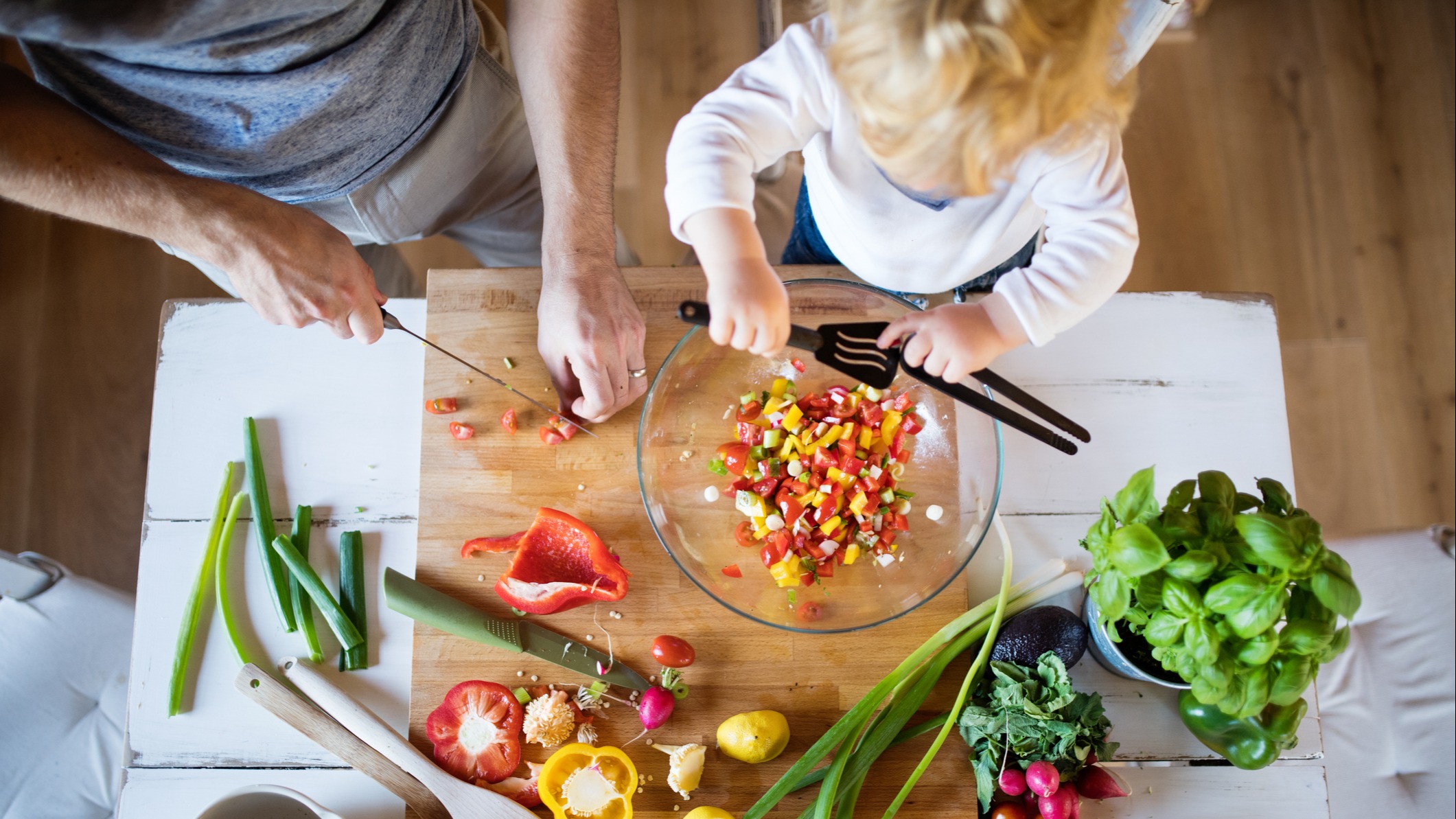
In this article
Christmas came, and your baby got a toddler cook set as a present. Now they want to help you cook everything. While it can be a bit overwhelming to have an extra pair of little hands seemingly ransacking the kitchen, teaching your toddler to cook can be very rewarding and fun. According to Rebecca Pytell from Strength and Sunshine, it’s also “one of the best ways to get your kids in the kitchen, excited about food, and willing to try new things.” Mom of two Eloisa Hife says that keeping the recipes fun with silly names helps kids giggle a lot while eating healthy foods. Here are some things to consider when cooking with kids.
Giving them the right tools can go a long way
Remember that your toddler has little hands, so gripping standard-size kitchen tools might be hard for them. And if it is hard for them, it might be dangerous, as is the case with knives. Consider purchasing a kitchen set for kids, such as the Deluxe Kids Cooking & Baking Gift Set from Kidstir. The set includes things like a cutting board and a whisk. It has a silicone stir spoon and spatula so kids can get busy in the mix of things. It also comes with tongs, a rolling pin, and a measuring cup. Best of all, it has a kid-safe knife for them to help with the chopping and cutting. Giving them the right tools will go a long way in helping them to be safe and enjoy the process of cooking.
Make the recipes kid-friendly and fun
One of the best things you can do is to get a kids’ cookbook and let your toddler choose the recipes. Kids cookbooks are great because they entice kids into trying new, healthy recipes with attractive pictures and graphics. And all of the recipes are designed with little hands and short attention spans in mind. The meals are easy to prep and make, and your child can be part of the process from beginning to end. Amazon has a lot of great selections, including the Little Helpers Toddler Cookbook: Healthy, Kid-Friendly Recipes to Cook Together by Heather Wish Staller. This book is designed for kids ages 1 through 4 and helps get kids comfortable with the different tasks involved in cooking and being in the kitchen.
But first, safety
One of the most important things about teaching kids to cook is teaching them to be safe in the kitchen. Here’s a list of safety items to work with your children on:
- Wear appropriate clothing: Cooking can be messy, and you don’t want your child to ruin their good clothes. A cooking apron is a great accessory to have in the kitchen to help kids keep the mess contained and protect them from accidental spills and splashes.
- Wash hands: Teach kids to wash their hands when they start cooking and frequently throughout. This will keep their hands clean and also keep the food free from germs. It might be hard for little kids not to touch their hair or faces during the cooking process. Washing their hands frequently will limit spreading any germs.
- Always cook with an adult present: While we all want to teach our children independence, we want them to be safe first and foremost. This is why you should explain to your toddler that they should only cook when they are with you or another supervising adult.
- Wash fruits and vegetables: Most fruits and vegetables are grown in areas where pesticides are used. Make sure you teach children to thoroughly wash fruits and vegetables to get chemicals and dirt off of them.
- Clean up spills: Accidents will happen, but you don’t want anyone slipping and falling. Clean up spills quickly to ensure everyone stays safe in the kitchen.
- Avoid raw food: When just getting started, it might be best for you to handle any raw meats. You don’t want your child to accidentally get sick because they picked up raw pork and didn’t remember to wash their hands.
- Have a fire safety conversation: Though this might be a rare occurrence, you need to teach your child that a fire is possible and what they should do if there is one. Show them how to call 911 if they need to and where to evacuate if there is a fire.
- Be aware of hot things: Whether it is hot food or the stove, teach your child that there is a danger in touching things that are too hot. A bad experience in the kitchen could sour them on cooking.
- Ask before you lick: We’ve all done it and probably shouldn’t have – licked the cookie dough bowl. Remember, there are raw eggs in cookie dough and other batters and mixes. That’s why you should make a rule to have your child ask you before licking the spoon or bowl.
- Tie hair back: Make sure your child’s hair is pulled back and won’t get in the way of cooking. You don’t want hair in the food.
- Use sharp tools carefully: Show your child how to hold a knife and other sharp objects. Teach them the proper way to use them so that they reduce the risk of cutting themselves.
- No running in the kitchen: Your child may get excited to run about and gather tools and ingredients. Teach them to slow down and not to run in the kitchen, where they are more likely to have an accident.




